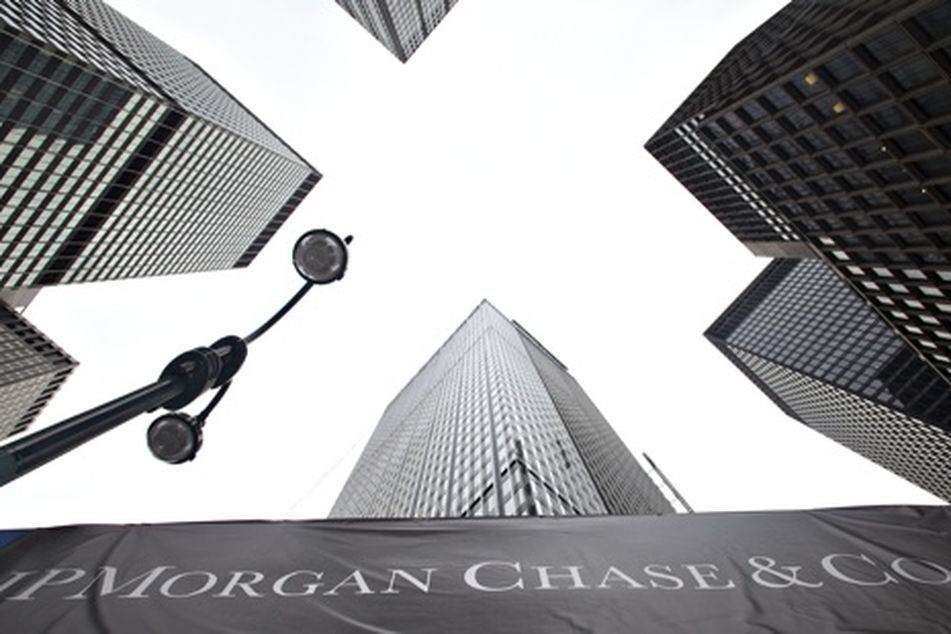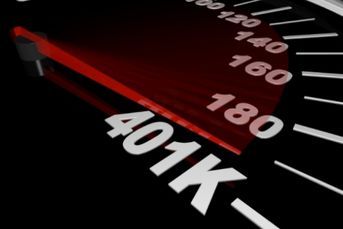‘Grievous mistakes’ cost JPMorgan $2B

Dimon rues 'self-inflicted' errors; big boost for the Volcker rule
JPMorgan Chase & Co. Chief Executive Officer Jamie Dimon said the firm suffered a $2 billion trading loss after an “egregious” failure in a unit managing risks, jeopardizing Wall Street banks’ efforts to loosen a federal ban on bets with their own money.
The firm’s chief investment office, run by Ina Drew, 55, took flawed positions on synthetic credit securities that remain volatile and may cost an additional $1 billion this quarter or next, Dimon told analysts yesterday. Losses mounted as JPMorgan tried to mitigate transactions designed to hedge credit exposure.
“There were many errors, sloppiness and bad judgment,” Dimon said as the company’s stock fell in extended trading. “These were grievous mistakes, they were self-inflicted.”
The chief investment office was thrust into the debate over U.S. efforts to ban proprietary trading when Bloomberg News reported last month that the unit had taken bets so big that JPMorgan, the largest and most profitable U.S. bank, probably couldn’t unwind them without losing money or roiling financial markets. Dimon, 56, had transformed the unit in recent years to make bigger and riskier speculative trades with the bank’s money, five former employees said.
Dimon had defended the unit as a “sophisticated” guardian of the bank’s funds on an April 13 conference call, calling news coverage “a complete tempest in a teapot.” On May 2, he led fellow Wall Street CEOs in a closed-door meeting to lobby the Federal Reserve about softening proposed U.S. reforms that might crimp their profits.
‘Egg on His Face’
Yesterday, he said the timing of the trading blunders “plays right into the hands of a bunch of pundits out there” who are pushing for a strict version of the proprietary trading ban named for former Federal Reserve Chairman Paul Volcker.
Given Dimon’s resistance to the ban and new regulations, “he’s got a lot of egg on his face right now,” said Craig Pirrong, a finance professor at the University of Houston. “Any chance they had of getting a relative loosening of Volcker rule, anything of that nature, that’s out the window.”
The chief investment office’s push into risk-taking was led by Achilles Macris, 50, according to three former employees, Bloomberg News reported on April 13. He was hired in 2006 as its top executive in London and led an expansion into corporate and mortgage-debt investments with a mandate to generate profits for the New York-based bank, they said. Dimon closely supervised the transition from its previous focus on protecting JPMorgan from risks inherent in its banking business, such as interest-rate and currency movements, they said.
‘Wall Street Hubris’
“I wouldn’t call it ‘more aggressive,’ I would call it ‘better,’” Dimon told analysts yesterday. “We added different types of people, talented people and stuff like that.” Until recently, they were careful and successful, he said.
“It’s classic Wall Street hubris, which we’ve seen so many times before,” said Simon Johnson, a former chief economist at the International Monetary Fund who now teaches at the Massachusetts Institute of Technology. “What’s particularly ironic here is that Jamie presents himself, and is believed by others to be, the king of risk management.”
Bloomberg News first reported April 5 that London-based JPMorgan trader Bruno Iksil had amassed positions linked to the financial health of corporations that were so large he was driving price moves in the $10 trillion market.
No Firings Yet
The $2 billion loss occurred in London under multiple traders, according to an executive at the bank, who spoke on the condition of anonymity. Dimon wasn’t immediately told about their shift in strategy and didn’t know the magnitude of the losses until after the company reported earnings April 13, the executive said. As the position deteriorated rapidly, the bank gathered internal analysts and examiners to investigate, and Dimon grew more distressed by the day, the executive said.
While no one has been fired yet, Dimon told analysts he will take “corrective actions.” The bank is keeping employees involved on hand while it deals with the transactions, and some are likely to lose their jobs afterward, said an executive with knowledge of the situation. The bank is also reevaluating its risk-monitoring team within the chief investment office, the person said.
JPMorgan risks losing more money now because other market participants will figure out what the bank has to do to unload its position, said Charles Peabody, an analyst with Portales Partners LLC in New York. Costs from the trades may affect earnings through the end of the year, he said.
Sharks to Blood
“When there’s blood in the water, the sharks are going to attack that animal,” said Peabody, who downgraded his recommendation on the stock in March to sector perform. “It could make it very difficult for them to unwind a trade.”
JPMorgan shares, which closed at $40.74 yesterday in New York, fell 7 percent to $37.91 by 11:33 a.m. in Frankfurt trading. The stock had advanced 23 percent this year before the losses were disclosed.
The cost of insuring debt of JPMorgan from default rose. Credit-default swaps insuring the bank’s debt climbed 17 basis points to 124, the highest since Feb. 16, according to data compiled by Bloomberg. A basis point is equivalent to a hundredth of a percentage point.
Bonds of JPMorgan declined the most in six months, widening the gap in yield between the lender’s $6 billion of undated 7.9 percent junior subordinated notes and the 0.875 percent Treasury due 2018 by 16 basis points to 392.2 basis points, according to Bloomberg Bond Trader prices at 10:10 a.m. in London. The price of the note, callable in 2018, fell 2.2 cents on the dollar to 107.84 cents, pushing up the yield to 6.3 percent.
Can’t Estimate Losses
Dimon declined on the call to discuss the specific transactions or people involved. Synthetic credit products are derivatives that generate gains and losses tied to credit performance without the owner buying or selling actual debt. JPMorgan used the instruments to hedge exposure on loans and other credit risks to corporations, banks and sovereign governments. The losses emerged after the firm tried to reduce that position and unwind the portfolio, Dimon said.
The bank said losses were partly offset by gains from the sales from its available-for-sale credit portfolio, resulting in a net loss for the firm’s corporate division, which includes the CIO, of about $800 million after taxes. Dimon said losses could widen or narrow in coming weeks and months, and that he can’t estimate potential costs.
Confirming Fears
As the bank repositions the synthetic credit portfolio, the chief investment office “may hold certain of its current synthetic credit positions for the longer term,” the firm said.
“Hopefully, this will not be an issue by the end of the year, but it does depend on the decisions and the markets,” Dimon said.
JPMorgan also changed how it calculates so-called value at risk, or VAR, a measure of how much the company estimates it could lose on securities on 95 percent of days. The company restated its VAR for the first quarter, previously disclosed at $67 million, at $129 million. The bank used a new model for calculating its trading risk in the first quarter that Dimon said was “inadequate.” It is reverting to the old model.
“It’s a major event that confirms a lot of investors’ worst fears about bank risk,” said Frank Partnoy, a former derivatives trader who’s now a law and finance professor at the University of San Diego. Concern is “that at a large, supposedly sophisticated institution, even something called a ‘hedge’ can contain all kinds of hidden risks that the senior people don’t understand.”
Difficult Exit
Iksil may have amassed a $100 billion position in contracts on Series 9 of the Markit CDX North America Investment Grade Index, counterparts at hedge funds and rival banks said in April. They based their estimates on the trades and price movements they witnessed as well as their understanding of the size and structure of the markets. The positions amounted to tens of billions of dollars, under the firm’s own math, a person familiar with its view said at the time.
The trade on the index probably wasn’t a one-way bet, the market participants said. Iksil may have offset it by buying protection on the same index with contracts that expire about seven months from now, the people said. That strategy would pay JPMorgan the difference between the long-dated contracts and the short-dated ones, and the trade would gain when the gap narrows. The hedge would end in December unless another trade is made to replace it.
Satyajit Das, the author of “Extreme Money: Masters of the Universe and the Cult of Risk,” compared the publicity around JPMorgan’s situation to losses that spiraled at hedge funds like Long-Term Capital Management in 1998 and Amaranth Advisors LLC in 2006.
“A $2 billion loss suggests a position of considerable size,” Das said. “I think you remember LTCM and a few other people like Amaranth that have had the exact same problem and have learned it’s a bit like hell — easy to get into, not so easy to get out of.”
–Bloomberg News–
Learn more about reprints and licensing for this article.






